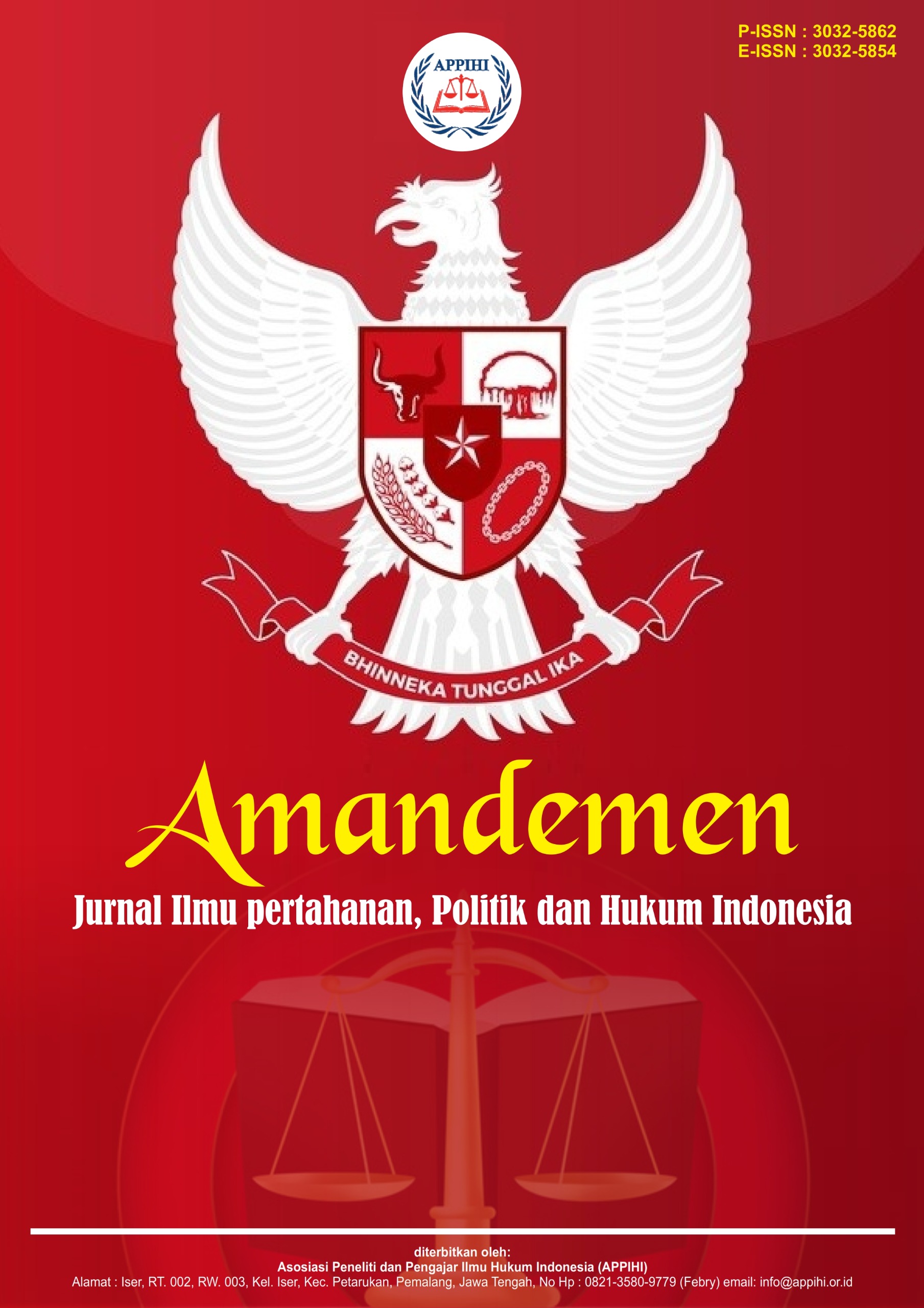Perkawinan Anak Antara Legalitas Formal dan Realitas Sosial di Masyarakat
DOI:
https://doi.org/10.62383/amandemen.v2i3.1085Keywords:
Child-Marriage, Formal-Legality, Social-RealityAbstract
Child marriage in Indonesia is still a serious problem despite regulations that limit the minimum age of marriage. The revision of Law No. 16/2019 sets the minimum age at 19 years, but the practice of marriage dispensation has actually increased. This phenomenon reflects the gap between formal legality and social reality which is influenced by factors such as low education, patriarchal culture, conservative religious interpretations, social pressure, and poverty. Dispensation for marriage is often granted without an in-depth assessment of the child's readiness, ignoring the principle of the best interests of the child. Law enforcement has not been effective due to the lack of legal literacy, weak supervision, and the dominance of local values. Prevention efforts require an interdisciplinary approach through reproductive health education, strengthening social protection, community participation, and synergy between institutions. Therefore, the elimination of child marriage must be a strategic policy based on the transformation of social norms and the protection of children's rights in a holistic and sustainable manner within the framework of gender perspective development and social justice.
Downloads
References
Afrianty, D. (2018). Women and Sharia law in Northern Indonesia: Local women’s NGOs and the reform of Islamic law in Aceh. Routledge.
Alfitri, & Hambali, H. (2021). Perkawinan anak dalam perspektif hukum dan sosial budaya di Indonesia. Jurnal HAM, 12(1), 15–28. https://doi.org/10.30641/ham.2021.12.15-28
Badan Pusat Statistik (BPS). (2023). Statistik perkawinan anak di Indonesia. https://bps.go.id
Bantebya-Kyomuhendo, G., Muhanguzi, F. K., & Watson, C. (2020). Compounding vulnerabilities: The effects of COVID-19 on adolescent girls in Uganda. Overseas Development Institute (ODI).
BPS & UNICEF. (2021). Analisis perkawinan usia anak di Indonesia.
Cislaghi, B., & Heise, L. (2019). Four avenues of normative influence: A research agenda for health promotion in low and mid-income countries. Health Psychology, 38(11), 837–840. https://doi.org/10.1037/hea0000733
Freeman, M. (2020). Children’s rights and the developing law. Cambridge University Press.
Girls Not Brides. (2021). Ending child marriage: A guide for global policy and action. https://www.girlsnotbrides.org/
Jones, N., & Walker, D. (2016). Towards a gender-just education: Evidence on how adolescent girls’ decisions to drop out of school are shaped in Ethiopia, India and Peru. Overseas Development Institute.
Kementerian Pemberdayaan Perempuan dan Perlindungan Anak (KPPPA). (2023). Laporan tahunan pencegahan perkawinan anak. KPPPA.
Komnas Perempuan. (2021). Laporan tahunan Komnas Perempuan: Perkawinan anak dan dispensasi kawin dalam pandemi.
Komnas Perempuan. (2022). Laporan tahunan 2022: Perempuan dalam jerat perkawinan anak.
Mahkamah Agung Republik Indonesia. (2019). Peraturan Mahkamah Agung Nomor 5 Tahun 2019 tentang Pedoman Mengadili Permohonan Dispensasi Kawin.
Majelis Ulama Indonesia (MUI). (2019). Fatwa tentang usia ideal perkawinan menurut Islam. MUI.
Nilan, P., Bennett, L., & Robinson, K. (2016). Indonesian youth looking towards the future of work: Interests, aspirations, and uncertainties. Youth & Society, 48(2), 228–247. https://doi.org/10.1177/0044118X13483770
Nurjanah, N., & Kustini, K. (2021). Strategi pelibatan pemerintah desa dalam pencegahan perkawinan anak di Nusa Tenggara Barat. Jurnal Ilmiah Kebijakan Hukum, 15(2), 245–262.
Organisation for Economic Co-operation and Development (OECD). (2022). Delivering on child well-being and equity through social protection. https://doi.org/10.1787/9789264290400-en
Plan International Indonesia. (2022). Mendorong pencegahan perkawinan anak melalui penguatan suara remaja.
Plan International. (2021). Adolescent girls in crisis: Voices from the COVID-19 pandemic. https://plan-international.org/publications/
Save the Children Indonesia. (2022). Pernikahan anak: Narasi, data, dan strategi pencegahan.
Setyawati, D. (2021). Praktik dispensasi nikah di tengah budaya lokal: Studi di wilayah Tapal Kuda Jawa Timur. UII Press.
Susanti, N., Jannah, M. H., & R. (2023). Digital literacy and emotional regulation among adolescents in urban Indonesia: A mixed method study. Indonesian Journal of Psychology and Education, 6(1), 45–62.
UNICEF Indonesia. (2022). Comprehensive sexuality education in Indonesia: Status and gaps.
UNICEF. (2020). Child marriage: Latest trends and future prospects. https://data.unicef.org/resources/child-marriage-latest-trends/
UNICEF. (2021). Child marriage: Latest trends and future prospects. https://data.unicef.org/resources/child-marriage-latest-trends/
UNICEF. (2023). Ending child marriage: A global imperative.
United Nations Population Fund (UNFPA). (2022). Comprehensive sexuality education: Global review. https://www.unfpa.org
United Nations Population Fund (UNFPA). (2023). Child marriage in Indonesia: Trends, impacts and interventions.
World Bank Group. (2017). Economic impacts of child marriage: Global synthesis report.
World Health Organization (WHO). (2022). Preventing early pregnancy and poor reproductive outcomes among adolescents in developing countries.
World Health Organization (WHO). (2023). Global status report on road safety 2023. https://www.who.int/publications/i/item/9789240072243
Downloads
Published
How to Cite
Issue
Section
License
Copyright (c) 2025 Amandemen: Jurnal Ilmu pertahanan, Politik dan Hukum Indonesia

This work is licensed under a Creative Commons Attribution-ShareAlike 4.0 International License.





